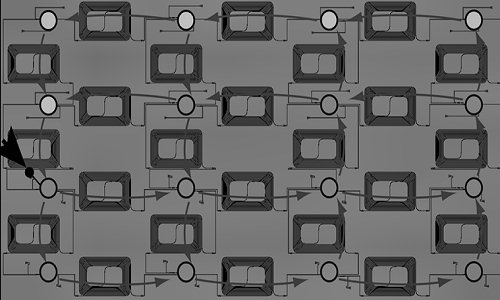In a recent paper in Nature Communications, researchers from Ghent University report on a novel paradigm to do optical information processing on a chip, using techniques inspired by the way our brain works.
Photo Credits: Photonics Research Group of the Department of Information Technology
– Prof. Dr. Peter Bienstman
Neural networks have been employed in the past to solve pattern recognition problems like speech recognition or image recognition, but so far, these bio-inspired techniques have been implemented mostly in software on a traditional computer. What UGent researchers have done is implemented a small (16 nodes) neural network directly in hardware, using a silicon photonics chip. Such a chip is fabricated using the same technology as traditional computer chips, but uses light rather than electricity as the information carrier. This approach has many benefits including the potential for extremely high speeds and low power consumption.
The UGent researchers have experimentally shown that the same chip can be used for a large variety of tasks, like arbitrary calculations with memory on a bit stream or header recognition (an operation relevant in telecom networks: the header is an address indicating where the data needs to be sent). Additionally, simulations have shown that the same chip can perform a limited form of speech recognition, by recognising individual spoken digits (“one”, “two”, …).
This research is a collaboration between members of the Photonics Research Group of the Department of Information Technology (P. Bienstman) and the Reservoir Lab of the Department of Electronics and Information Systems (J. Dambre, B. Schrauwen). It was funded by the European Research Council (ERC) through the Starting Grant NaResCo and by the Belgian IAP programme through the Photonics@BE network.
Story Source:
The above story is based on materials provided by Ghent University.





